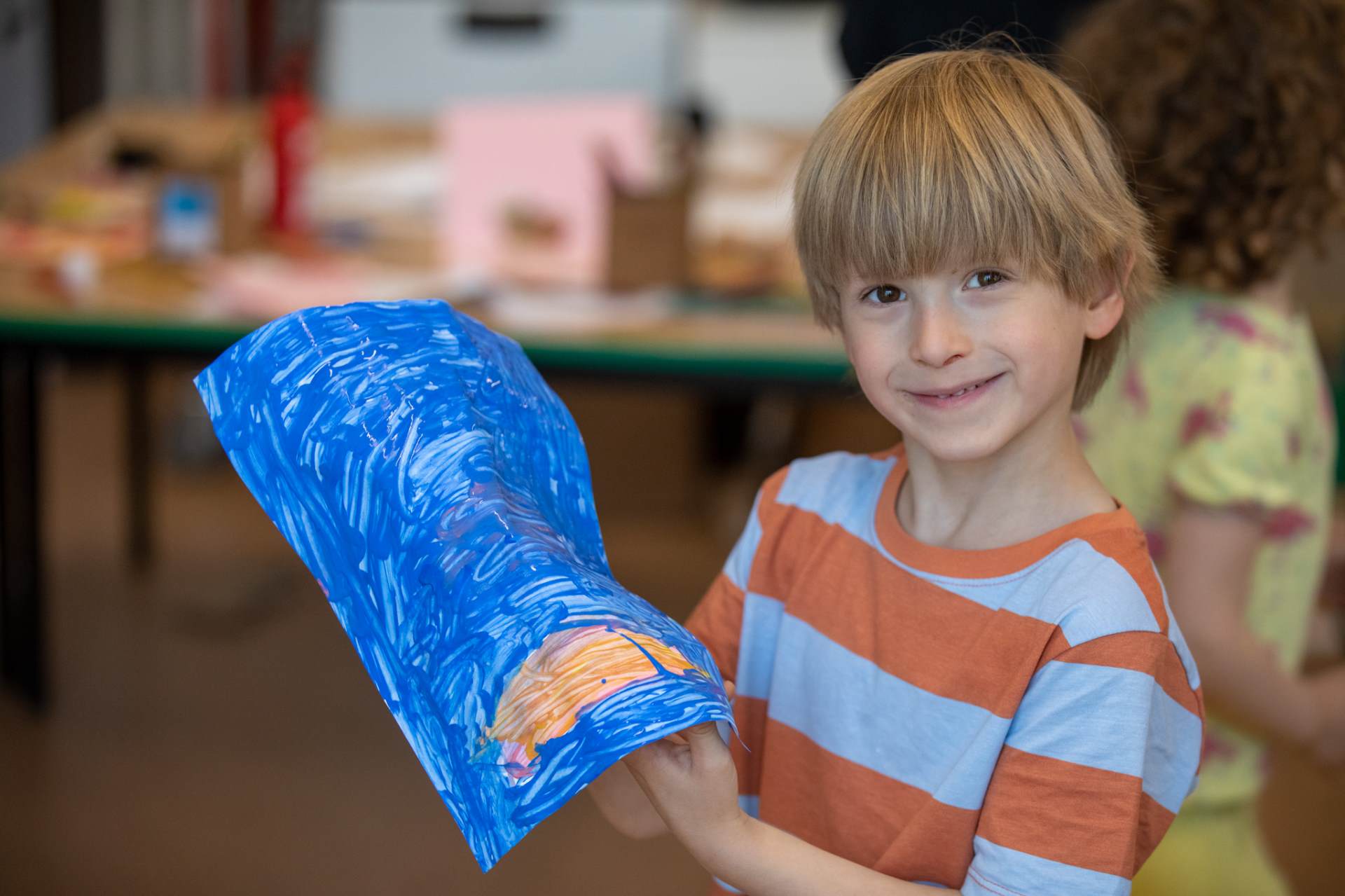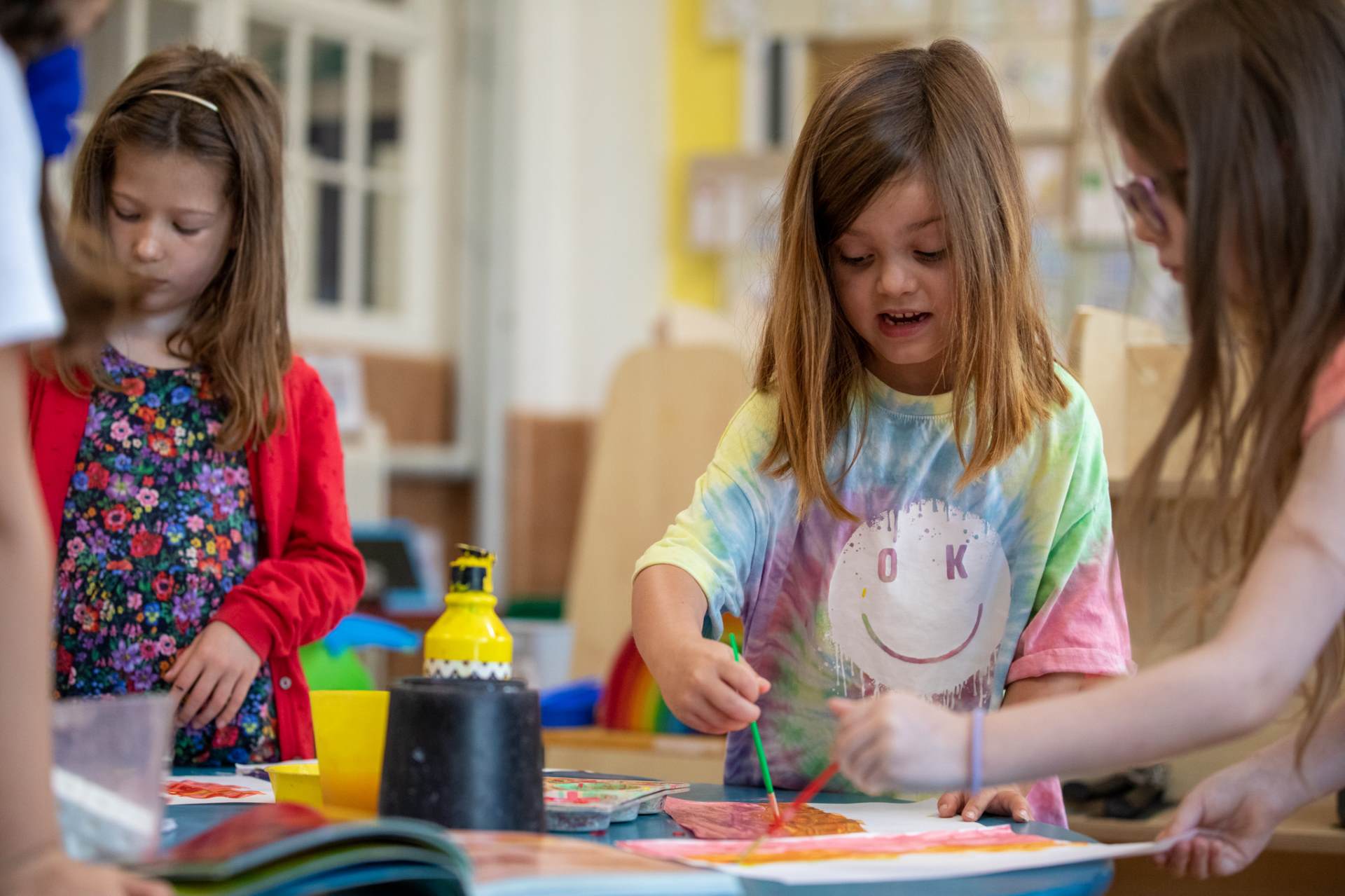Art and Design
Click here to read about how we approach our curriculum, and to download our progression maps.
At Hanover, Art and Design is valued as an important part of a balanced curriculum that provides the children with opportunities not only to develop and extend skills, but also to express their individuality.
Intent
Our Art and Design curriculum and its cross-curricular links engage, inspire and challenge our pupils as they experiment and create their own pieces.
The National Curriculum for Art and Design aims to ensure that all pupils:
- Produce creative work, exploring their ideas and recording their experiences
- Become proficient in drawing, painting, sculpture and other art, craft and design techniques
- Evaluate and analyse creative works using the language of art, craft and design
- Know about great artists, craft makers and designers, and understand the historical and cultural development of their art forms.
As pupils progress, they develop a more nuanced understanding of art and design, and are able to reflect on and critique works of art. Children’s artwork is also celebrated within the school and wider community.
We want to nurture children’s confidence in their artistic ability, and to teach them to value originality in art. Our location means we are able to make use of the wealth of art galleries across London.
Implementation
Our curriculum is built around developing six fundamental skills in art: drawing, colour, texture, form, printing and pattern. These are mapped across each year group to ensure progression from the Early Years to Year 6. See our art skills progression map for more detail.
Art learning for the term is linked to each class’s main topic in order to enrich children’s understanding across the curriculum. Each unit of work also focuses on a key artist whose works and techniques are studied and compared. The curriculum is designed so children learn about, and are inspired by, artists from a range of periods and with varied artistic approaches.
Every child from Y1 up has a sketchbook that travels with them up the school, and is used regularly to capture ideas and to practise techniques.
All children including those who have SEND or are disadvantaged fully access the Art and Design curriculum. This may include additional adult support or use of visuals or adapted tools. Structured sentence stems and taught vocabulary scaffolds children in discussion.
Art in the Early Years
Children in the early years develop their art and design skills through the Expressive Arts & Design strand of the EYFS. There are two aspects to this strand, exploring and using media and materials and being imaginative. Children are provided with a wide range of materials (such as drawing, painting, modelling and woodwork) which are accessible to them all of the time. They are taught skills and techniques and they are introduced to simple tools. Children are encouraged to explore their own ideas through different media and through different representations. We use nature, art, music and stories to provide stimulus and expand imaginations. Children learn to plan, adapt and evaluate their creative work and to talk about and share their ideas.
Impact
Our Art and Design curriculum equips pupils with the confidence to use a range of techniques and mediums to create their own artwork. It also promotes individual expression and the understanding that art is a way of communication. The children display a sense of pride over their creations which is evident in displays within classrooms and around the school showcasing their work.
“We’ve learnt about different artists, how they developed their styles. I enjoy using their work to inspire my art.” Y5 pupil
“I liked it when we made Picasso self portraits and used so many different colours and mixed them.” Y2 pupil
“I liked painting the Mona Lisa where we cut up pictures of Mona Lisa into parts and collaborated in groups to make one big collage.” Y6 pupil
“I liked it when we did leaf printing. We painted over leaves and printed it over paper. It was really fun.” Y3 pupil


